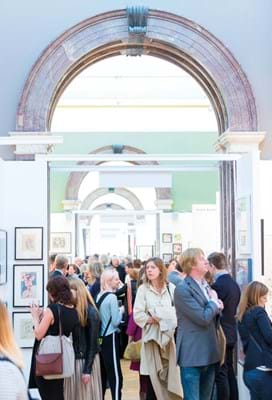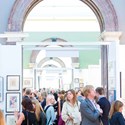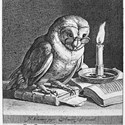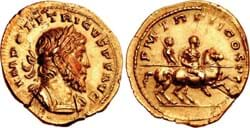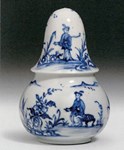Today it is undoubtedly a destination for those in search of top-flight contemporary prints.
Organisers highlight in the programme a series of newly published works by artists such as Glenn Brown, Christopher Le Brun and Brian Eno. During the fair, Alan Cristea Gallery will dedicate its stand to complete portfolios by Cornelia Parker and Gillian Ayres, while new exhibitor Polígrafa will feature the works of Rose Wylie.
It’s an impressive selection, suitably placed in the main gallery of the RA which will soon be filled by the annual summer exhibition.
However, the predominance of contemporary work represents a shift away from the fair’s beginnings.
“The fair has changed quite dramatically in its 32 years,” says director Helen Rosslyn.
“When LOPF was first set up there were just 16 exhibitors. About half of these were Old Master print dealers and we did not have a contemporary print dealer.”
Today, Rosslyn says, “both artists and buyers are increasingly realising the value of original prints as collectable works of art, so the contemporary print market is thriving”.
Market shift
Long-time exhibitor Andrew Edmunds, specialist in satire and caricature works of the 18th and early 19th centuries, is among those who finds the shift away from older works is palpable – and a reflection, he says, of the wider market.
“The amount of material has declined and the audience has waned for complicated reasons,” Edmunds adds. “A high proportion of our business is now with institutions.”
It is the propensity of historic and Old Master prints to be incorporated into institutional or private collections and stay there that has contributed to the scarcity of material.
Still, the fair keeps Edmunds coming back and in this edition he is one of a small but high-level group of specialists in historic prints, among them Old Master prints dealer Christopher Mendez, Elizabeth Harvey-Lee bringing Old Master and modern pieces and first-time Parisian exhibitor Sarah Sauvin also with Old Master and modern works.
For Ofer Gildor of modern art specialist Gilden’s Fine Art Gallery, the event has managed to balance the new with the traditional so far.
“The fair has kept its core values but at the same time does succeed in evolving and improving,” he says. “A client based in London in today’s market expects to see the new trends and this is manifested in the great selection of galleries in the LOPF.”
The trick for the fair in future will be to maintain the balance while encouraging visitors and sales – and it is well placed to do so.
Fancy £8000 to spend?
The Hallett Independent Acquisitions Award gives a British museum or gallery £8000 to spend at The London Original Print Fair. ATG met Adam Prideaux of Hampshire and London-based insurance broker Hallett to find out more.
Prideaux started out at Spink and previously opened contemporary art gallery Limoncello.

Adam Prideaux of insurance broker Hallett, started out at Spink and previously opened contemporary art gallery Limoncello.
Who benefits from the prize?
Many regional museums are so stretched right now financially. This gives them the chance to come to London, meet the dealers and other curators in the London art world.
With £8000 they can buy a decent print or portfolio and it promotes the relationship between dealers and museums. Also, hopefully, forging the link through the prize will help our relationship with both sides. We have quite a considerable book of business with dealers but we’d also like to represent more museums.
Why exhibit at a fair?
Generally the odds can feel stacked up against a gallery. The rents are so high and rates are going up massively. Those dealers who do well at the moment seem to find their success at fairs. It’s a way to meet a key international crowd of collectors.
What’s the biggest threat for dealers right now?
The auction houses. They’ve moved into the dealers’ market and are just taking out all of these small traders. As the market has expanded, new buyers go to the auction houses and will go for, say, a Kapoor at auction, not realising they can get it for less at a gallery. You have to be brave as hell to open a gallery.
What’s some good news for dealers?
Insurance premiums are falling. There’s overcapacity as lots of insurers are keen to get into the market for art and they’re competing on price significantly. This is in part because there are fewer claims thanks to improvements in shipping and security standards.
Will you buy at LOPF?
Not for myself but I think we will for the office where we already have a collection.


